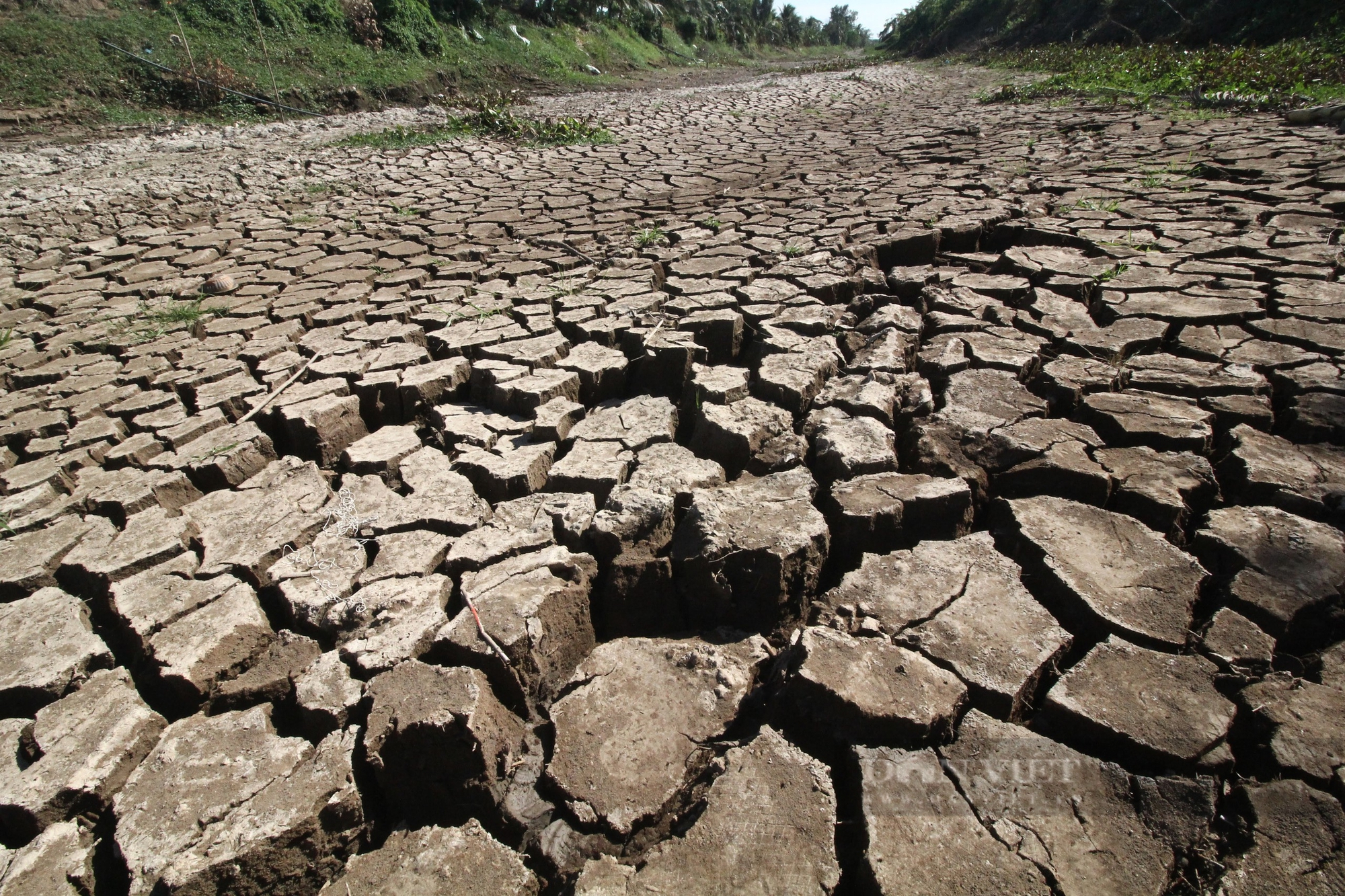The rapid decrease in the flow to the Mekong Delta has led to early saline intrusion in the river mouths. In January, saline intrusion occurred in the river mouths and will peak between February and April. It is forecasted that saline intrusion in 2025 will be higher than the average of many years.
Flow to Mekong Delta decreases rapidly, saltwater intrusion appears early
The flow to the Mekong Delta in the dry season depends on the regulated flow from upstream, but according to the Southern Institute of Water Resources Research, recently, the flow to the Mekong Delta has decreased rapidly.

It is forecasted that salinity intrusion in the Mekong Delta in 2025 will be higher than the average of many years. Illustrative photo, source: HX
Specifically, at Kratie station, as of January 23, 2025, the water level was at 7.70m. Compared with past data, the water level here is currently about 0.3m higher than the 2023-2024 dry season, 0.47m higher than the 2021-2022 dry season, 0.8m higher than the 2019-2020 dry season, and 0.64m higher than the 2015-2016 dry season. However, it is about 0.07m lower than the average of many years, and 0.18m lower than the 2022-2023 dry season.
At Tonle Sap Lake, the current discharge phase is about 6.21 billion m3. Compared to past data, the current capacity is about 3.19 billion m3 higher than the 2019-2020 dry season, about 3.09 billion m3 higher than the 2015-2016 dry season. However, it is about 0.72 billion m3 lower than the average of many years, about 1.69 billion m3 lower than the 2023-2024 dry season, about 4.84 billion m3 lower than the 2022-2023 dry season and about 0.95 billion m3 lower than the 2021-2022 dry season.
During the week from January 17, 2025 to January 23, 2025, the water discharge from Jinghong Hydropower Plant to the downstream ranged from 670 m3/s to 1059 m3/s (currently at 780 m3/s), which is considered a low discharge compared to the same period in previous years.
The Southern Institute of Water Resources Research said that the rapid decrease in water flow to the Mekong Delta has caused saltwater to appear early in the river mouths. Last January, saltwater penetrated deep into the river mouths and will peak between February and April 2025.
Currently, saline intrusion in the dry season has affected the coastal areas of the Mekong Delta. Including coastal provinces such as Long An, Ben Tre, Tra Vinh, Soc Trang, Bac Lieu, Ca Mau and Kien Giang province. People need to take advantage of water storage as soon as possible. At the same time, strengthen salinity monitoring and update forecast bulletins regularly.
Forecast of salt intrusion higher than average for many years
According to statistics, the total area planted for the winter-spring crop in the Mekong Delta as of January 17 was 1,445,263 hectares, reaching 97% of the plan, mainly concentrated in Long An, Dong Thap, An Giang, Kien Giang, Soc Trang, Can Tho, Hau Giang, Tien Giang, and Vinh Long.
Some coastal localities have an area of over 5,000 hectares that has not been planted as of January 17, such as Tien Giang, Soc Trang and Bac Lieu.
February to April is the period of high salinity, so coastal localities should consider delaying production of some areas of the late winter-spring crop that have not yet been planted to reduce the risk of damage. Instead, early production of the summer-autumn crop in coastal areas may be more effective because rains are forecast to appear earlier than the average of many years in the 2025 dry season.
The Southern Institute of Water Resources Research recommends that localities in the Mekong Delta need to proactively respond to drought and salinity in accordance with the conditions of each place.
Specifically, in the upper Mekong Delta, water resources are sufficient, difficulties are mainly in the high mountainous areas of Tinh Bien and Tri Ton, it is necessary to implement measures to store water and save water.
In the central Mekong Delta, the water source is basically guaranteed. The salinity control and water storage works are operated properly. When taking fresh water or irrigating crops, it is necessary to strictly check the salinity, especially for fruit trees.
Unusual salinity intrusion in the coastal areas of the Mekong Delta may affect water resources and production in coastal irrigation systems such as Go Cong, North Ben Tre, Tra Vinh coastal areas and Long Phu-Tiep Nhat systems. Therefore, in addition to considering the expansion of the late winter-spring crop area as mentioned above, it is necessary to change production and prepare response plans, store and use water reasonably, especially ensuring water for fruit growing areas in Chau Thanh, Cho Lach, Mo Cay Bac-Nam districts of Ben Tre province, Ke Sach district of Soc Trang province.
Previously, on December 8, 2024, the Prime Minister issued Official Dispatch No. 128/CD-TTg on proactively preventing drought, water shortage and saltwater intrusion, so the agricultural sector of localities proactively takes solutions to adapt to drought and saltwater intrusion in 2025. At the same time, monitor and update news to proactively store water for people's lives and ensure safety for production.
According to the Southern Institute of Water Resources Research, in recent months, hydroelectric reservoirs have been releasing very limited water, causing water levels to be lower than average. Therefore, it is recommended that the upstream Mekong countries consider increasing water discharge from now until mid-March, which will help minimize unnecessary damage in hydro-climatic conditions like this year.
Source: https://danviet.vn/xam-nhap-man-xuat-hien-som-o-mien-tay-du-bao-dat-dinh-khi-nao-20250202142452965.htm














































Comment (0)